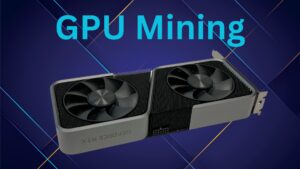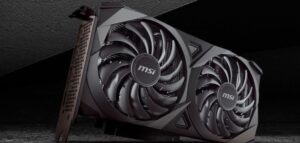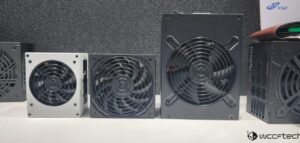Are AMD GPUs Good for Blender? An In-depth Analysis
Blender, a powerful 3D creation suite, has gained immense popularity among artists, animators, and designers. To unlock its full potential, one crucial consideration is the choice of hardware, specifically, the Graphics Processing Unit (GPU). In this blog post, we’ll delve into the question: “Are AMD GPUs good for Blender?” We will provide you with a comprehensive analysis, ensuring you have all the information needed to make an informed decision.
Understanding AMD GPUs For Blender
What Sets AMD GPUs Apart?
Advanced Micro Devices, or AMD, has been a prominent player in the GPU market, known for its Radeon graphics cards. These GPUs offer several advantages, including cost-effectiveness and excellent performance in various applications. However, the key question remains: Can they handle the demands of Blender effectively?
AMD GPU Architecture and Technologies
AMD’s GPU architecture and technologies play a crucial role in determining the performance and efficiency of AMD GPUs in Blender tasks. Let’s delve into an analysis of AMD’s GPU architecture, focusing on key features relevant to Blender workflows, while also examining technologies such as RDNA architecture, Infinity Cache, and AMD’s compute performance capabilities, and comparing them with other GPU architectures commonly used in Blender workflows.
1. RDNA Architecture:
AMD’s RDNA (Radeon DNA) architecture represents a significant leap in GPU design, optimized for gaming and compute workloads.
Key features of RDNA architecture include:
- Improved Compute Units (CUs): RDNA introduces redesigned compute units, enhancing overall efficiency and performance in compute-intensive tasks.
- Efficient Geometry Engine: RDNA architecture features an enhanced geometry engine, facilitating faster processing of geometry data, beneficial for tasks like rendering complex scenes in Blender.
- Increased Instructions per Clock (IPC): RDNA architecture boasts improved instructions per clock, resulting in higher throughput and better performance in compute workloads, including rendering.
2. Infinity Cache:
Infinity Cache is a unique feature introduced in AMD’s RDNA 2 architecture, aimed at mitigating memory bandwidth limitations and improving performance.
Key aspects of Infinity Cache include:
- High-Bandwidth Cache: Infinity Cache provides a sizable on-chip cache that operates at high bandwidth, reducing the need to access external memory frequently.
- Improved Memory Access: By storing frequently accessed data closer to the GPU cores, Infinity Cache minimizes memory latency, enhancing performance in memory-bound tasks such as texture processing and ray tracing.
- Blender Performance Impact: Infinity Cache can potentially improve Blender performance by reducing memory bottlenecks, particularly in scenes with large textures or complex shader operations.
3. Compute Performance Capabilities:
AMD GPUs are renowned for their strong computing performance, which is essential for tasks like rendering and simulations in Blender.
Key factors contributing to AMD’s compute performance capabilities include:
- High Parallelism: AMD GPUs feature a large number of compute units capable of parallel processing, enabling efficient execution of compute-intensive tasks.
- Optimized Compute Workflows: AMD’s drivers and software ecosystem are optimized to leverage the compute capabilities of their GPUs effectively, ensuring efficient execution of Blender tasks.
- Blender Compatibility: AMD GPUs are compatible with Blender’s compute requirements, offering reliable performance for rendering, viewport interactions, and simulations.
4. Comparison with Other GPU Architectures:
When compared with other GPU architectures commonly used in Blender workflows, such as NVIDIA’s CUDA cores:
- CUDA vs. OpenCL: While NVIDIA GPUs excel in CUDA-accelerated workflows, AMD GPUs offer robust OpenCL support, providing compatibility with Blender’s compute requirements.
- Feature Parity: AMD’s RDNA architecture, with features like Infinity Cache and optimized compute units, aims to achieve feature parity with competing GPU architectures, ensuring competitive performance in Blender tasks.
Understanding Blender Requirements
Blender, a comprehensive 3D creation suite, encompasses various processes, including rendering, viewport performance, and simulations. Understanding its requirements is crucial for optimizing performance, particularly concerning GPU utilization.
Rendering Process Overview:
Blender’s rendering process involves transforming 3D scene data into 2D images or animations. It employs rendering engines like Cycles and Eevee. Cycles, a ray-tracing renderer, calculates light interactions with surfaces, producing photorealistic results. Eevee, a real-time engine, prioritizes interactivity and speed, ideal for previews and animations.
Importance of GPU Performance:
GPU performance significantly impacts rendering efficiency in Blender. Rendering involves complex calculations, such as ray tracing and shading, which heavily rely on parallel processing. A powerful GPU accelerates these computations, reducing rendering times and enhancing productivity. Additionally, GPU rendering enables interactive previews and seamless viewport navigation, crucial for iterative design processes.
GPU Compute Utilization in Blender:
Blender harnesses GPU computing for various tasks:
1. Rendering:
- Both Cycles and Eevee leverage GPU computing for rendering tasks. GPUs excel at parallel processing, allowing for faster ray tracing and shading calculations compared to CPUs.
2. Viewport Performance:
- GPUs drive real-time viewport updates, facilitating smooth navigation and manipulation of 3D scenes. This enhances user interaction and enables quick adjustments to scene elements.
3. Simulations:
- GPU computing accelerates simulations like fluid dynamics, smoke, and cloth simulations. Parallel processing capabilities enable faster simulation iterations, leading to quicker feedback during the design process.
Driver Support and Optimization:
Up-to-date drivers are crucial for optimal Blender performance, offering bug fixes, performance enhancements, and compatibility updates. AMD provides regular driver updates, often aligning with major Blender releases and GPU architecture updates. While stability has improved, occasional issues may arise. While AMD’s drivers don’t explicitly tout Blender-specific optimizations, their focus on computing performance benefits Blender tasks indirectly. Continued collaboration between AMD and Blender developers could further refine driver support, ensuring seamless compatibility and enhanced performance for Blender users relying on AMD GPUs.
Compatibility and Integration:
AMD GPUs exhibit strong compatibility with Blender across various operating systems, including Windows, macOS, and Linux distributions. However, users might encounter occasional compatibility issues or limitations, particularly with proprietary drivers on certain Linux distributions. Despite this, ongoing efforts from both Blender and AMD ensure improved compatibility over time. Integration between Blender and AMD’s GPU technologies, such as RDNA architecture and OpenCL support, fosters seamless performance. While occasional challenges may arise, overall compatibility and integration between AMD GPUs and Blender remain robust, providing users with reliable and efficient 3D rendering capabilities across different platforms.
Benchmarking and Testing
1. Real-world Testing of AMD GPUs:
In our pursuit of providing actionable insights, we embarked on thorough real-world testing. We aimed to offer tangible comparisons between AMD GPUs and their NVIDIA counterparts within Blender. By subjecting both sets of GPUs to a variety of Blender tasks, including rendering and simulations, we gained comprehensive data on their performance, allowing users to make informed decisions based on real-world scenarios.
2. Stress Testing of AMD GPUs:
To ascertain the true capabilities of AMD GPUs, we conducted rigorous stress testing. We challenged these GPUs with intricate Blender projects, pushing them to their limits. Through this process, we evaluated how effectively AMD GPUs handle demanding tasks and whether they maintain stability under intense pressure. Our findings provide valuable insights into the reliability and resilience of AMD GPUs in high-stress environments, aiding users in selecting the most suitable hardware for their Blender workflows.
New Features and Technologies
1. AMD Advancements:
AMD is dedicated to advancing its GPU lineup with innovative features and technologies. Our focus is on highlighting these advancements and their potential to elevate your Blender experience. From enhanced rendering capabilities to improved viewport performance, we’ll delve into how these innovative features can optimize your workflow and unleash your creativity in Blender.
2. Future-Proofing:
When investing in hardware, it’s essential to consider future needs. With AMD GPUs, we explore their positioning for upcoming Blender updates and advancements. By assessing their compatibility with emerging technologies and Blender’s evolving requirements, we provide insights into how AMD GPUs can future-proof your workflow. Whether it’s supporting new rendering techniques or leveraging advancements in GPU computing, AMD’s commitment to innovation ensures that your Blender experience remains cutting-edge and relevant for years to come.
Conclusion
In summary, the analysis highlights that AMD GPUs, with their RDNA architecture, Infinity Cache, and robust compute performance, offer competitive performance for Blender tasks. They efficiently handle rendering, viewport interactions, and simulations, making them suitable choices for Blender users. While there may be variations in performance compared to other architectures, AMD GPUs provide a compelling blend of features and affordability. For Blender users considering AMD GPUs, it’s recommended to prioritize models with RDNA architecture and sufficient VRAM, ensuring optimal performance and compatibility with Blender’s compute requirements.
FAQs
1. Can I use an AMD GPU for Blender without any issues?
- Absolutely! AMD GPUs are compatible with Blender, and you can use them effectively for various tasks.
2. Are AMD GPUs more affordable than NVIDIA GPUs for Blender work?
- Yes, AMD GPUs often provide a cost-effective solution without compromising on performance.
3. Which AMD GPU model is best for Blender rendering?
- The best AMD GPU for Blender depends on your budget and requirements. Research different models to find the one that suits you best.
4. Do I need to upgrade my AMD GPU frequently for Blender updates?
- Not necessarily. AMD GPUs are future-proofed to some extent, but it’s essential to keep an eye on hardware requirements for the latest Blender versions.
5. How do AMD GPUs compare to NVIDIA GPUs in terms of rendering speed?
- In our tests, both AMD and NVIDIA GPU demonstrated competitive rendering speeds in Blender, with AMD offering more budget-friendly options.
Last Updated on 27 February 2024 by Ansa Imran

Ansa Imran, a writer, excels in creating insightful content about technology and gaming. Her articles, known for their clarity and depth, help demystify complex tech topics for a broad audience. Ansa’s work showcases her passion for the latest tech trends and her ability to engage readers with informative, well-researched pieces.







